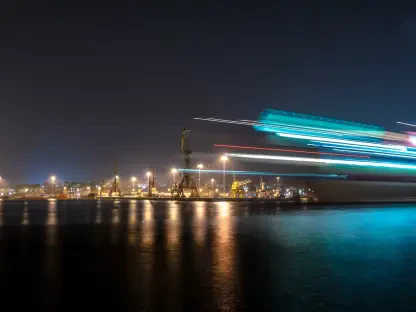As wildfires continue to ravage the American West, homeowners face an escalating insurance crisis that threatens their ability to rebuild and recover. Today, we’re speaking with Simon Glairy, a renowned expert in insurance and Insurtech, with deep expertise in risk management and AI-driven risk assessment. With years of experience analyzing the intersection of natural disasters and financial protection, Simon offers invaluable insights into the growing challenges of underinsurance, market retreat, and the evolving threat of wildfires. In our conversation, we explore the stark gaps between coverage and rebuilding costs, the unique vulnerabilities of states like California, the impact of insurer withdrawals on homeowners and buyers, and the slow pace of recovery in fire-ravaged communities.
Can you walk us through the growing gap between insurance coverage and the actual cost of rebuilding homes after wildfires, and why this is becoming such a widespread issue?
Absolutely. What we’re seeing, as highlighted in recent reports, is a phenomenon often called “underinsurance shock.” Many homeowners, even those with long-standing policies, are finding that their coverage—say, a $750,000 dwelling limit—falls dramatically short of the true cost to rebuild, which can easily hit $1 million or more in today’s market. This gap arises because reconstruction costs have skyrocketed due to inflation, labor shortages, and high demand for materials post-disaster. Meanwhile, policy limits often aren’t adjusted frequently enough to keep pace. This isn’t just a rare occurrence; it’s becoming alarmingly common across the West, leaving families financially stranded after losing everything.
Why is California so disproportionately affected by wildfire risk compared to other western states, and what does this mean for its residents?
California stands out due to a combination of factors. It has a massive population living in or near wildland-urban interfaces, where homes butt up against fire-prone vegetation. Add to that the state’s prolonged droughts, high winds, and warming climate, and you’ve got a recipe for disaster. Areas like Los Angeles, with over 240,000 at-risk homes valued at nearly $192 billion, are particularly exposed. This level of risk—totaling $796 billion statewide—puts immense pressure on the housing market and local economy. When properties are uninsurable or premiums are unaffordable, it stifles growth, devalues homes, and traps residents in a cycle of financial insecurity.
What’s driving major insurance companies to pull out of wildfire-prone areas, and how is this reshaping the market for homeowners?
Insurers are retreating because the financial risk of wildfires has become unsustainable for them. The frequency and severity of fires, coupled with billion-dollar loss events, mean they’re paying out more in claims than they can recoup through premiums. In California, for instance, the state’s Fair Access to Insurance Requirements Plan has seen policies more than double since 2020, now covering over 452,000 homes as private insurers exit. This forces homeowners into a state-backed last-resort option that’s often more expensive and less comprehensive. Meanwhile, in states like Colorado and Oregon, we’ve seen premium hikes of 60% or even quadrupling in some areas, making coverage a luxury many can’t afford.
How is this insurance shortage affecting people trying to buy homes in high-risk areas of the West?
It’s creating a real barrier, especially for first-time buyers. When insurance premiums eat up more than 3% of a buyer’s income, it throws off their debt-to-income ratios, making it nearly impossible to qualify for a mortgage. Lenders are increasingly wary of properties in wildfire zones without adequate coverage, so buyers are either priced out or stuck with homes they can’t protect. This chills the housing market in these regions, reduces property values, and leaves communities struggling to attract new residents.
Rebuilding after wildfires, like the recent Los Angeles fires in 2025, seems to be moving at a snail’s pace. What are the biggest hurdles slowing down recovery?
Recovery is stalling for several reasons. After the January 2025 fires in Los Angeles, which damaged over 13,500 properties, only a handful of rebuilding permits—fewer than 50—were issued by late May. Bureaucratic delays in places like Altadena are a big issue, as local governments struggle to process applications fast enough. On top of that, there’s a severe shortage of contractors, construction loan interest rates are hovering between 10% and 12%, and material costs have ballooned. Homeowners are caught in a perfect storm of logistical and financial obstacles, often unable to even start rebuilding months after a disaster.
We’ve seen a rise in mortgage delinquency rates in wildfire-affected areas like Los Angeles County. Can you explain what’s behind this trend?
The financial strain from wildfires ripples through every aspect of a homeowner’s life, including their ability to pay mortgages. In Los Angeles County, delinquency rates for payments 30 to 119 days late jumped from 1.87% in December 2024 to 2.22% by February 2025, right after the January fires. This spike reflects the immediate fallout—loss of income if jobs or businesses are disrupted, unexpected costs for temporary housing, and the burden of rebuilding without adequate insurance. Meanwhile, neighboring areas like Ventura and Orange Counties, which dodged the worst of those fires, actually saw delinquency rates drop, showing how localized and disaster-driven this problem is.
With new concepts like “wildfire-induced conflagration” emerging, where fires spread from vegetation to structures, how do you think traditional risk assessments need to evolve?
This is a critical shift in how we understand wildfire threats. Traditional risk maps often focus on vegetation and weather patterns, rating many properties as low-to-moderate hazard. But events like the 2025 Los Angeles fires or the 2023 Lahaina fire show that conflagration—where fires jump to structures—can devastate areas previously deemed “safe.” In the Eaton Fire, for example, 75% of properties in the burn zone had low hazard ratings but high conflagration risk. We need to integrate structural density, building materials, and urban planning into risk models, using AI and real-time data to predict these transitions. Otherwise, we’re underestimating the true danger to communities.
What is your forecast for the future of wildfire insurance and risk management in the American West over the next decade?
I think we’re at a turning point. Over the next ten years, I expect the insurance market to continue contracting in high-risk areas unless there’s significant innovation in risk assessment and policy design. We might see more state intervention, like expanded FAIR plans, but that’s a Band-Aid, not a cure. The real game-changer could be technology—AI-driven models that better predict conflagration risks and personalize premiums, alongside public-private partnerships to fund mitigation efforts like fire-resistant building codes or community defensible space. But if climate trends worsen and fires grow more severe, affordability will remain a crisis. Homeowners, insurers, and governments will need to collaborate on a scale we haven’t seen yet to prevent entire regions from becoming uninsurable.









